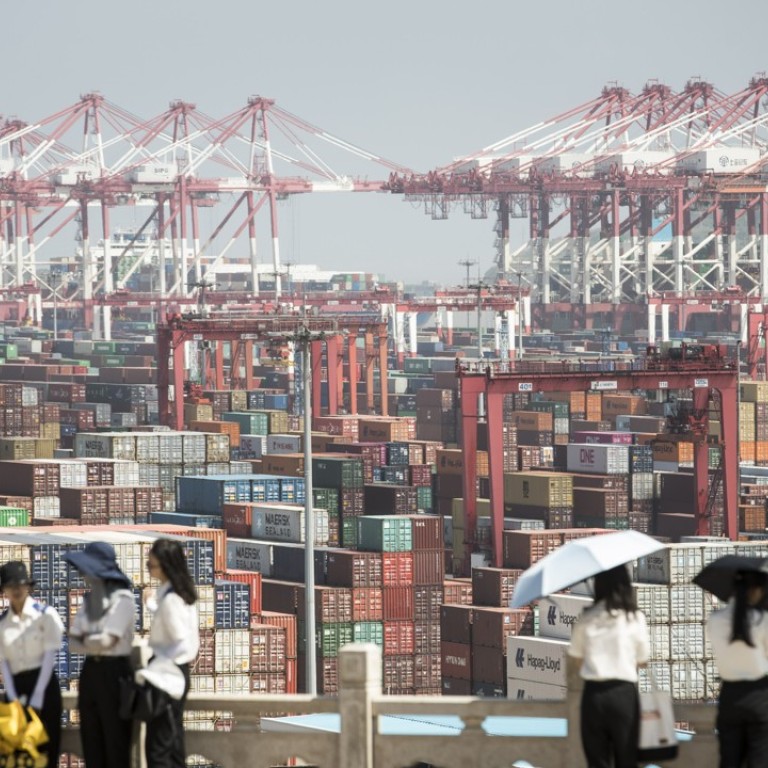
Trade war: China suffers three-month export downturn as Donald Trump’s tariffs bite
Indicator of the export sector’s health shows lowest reading since China-US trade tensions escalated in March
The powerful export machine of China is quickly losing steam amid threats of a full-blown trade war with the United States, an index compiled by Beijing suggests.
The “new export order” subindex in China’s official purchasing manager index – the first available indicator to gauge China’s export sector’s health every month – fell sharply in August even when only a small portion of Washington’s threatened additional tariffs on Chinese products kicked in, according to the National Bureau of Statistics.
The subindex dropped by 0.4 points to 49.4 in August, the lowest since the China-US trade tension escalated in March, according to data released by the statistics agency.
It was also the third month that the export order subindex had been below 50 – under 50 means a contraction – marking the first time China has had a three-month export downturn in two years.
Small and medium-sized exporters were hit particularly hard, with readings of 47.4 and 48 respectively, while large firms had an index reading of 50.2, according to the China Federation of Logistics and Purchasing, the agency that compiled the purchasing manager index (PMI) together with the statistics agency.
At the same time, the import subindex fell to 49.1 in August from 49.6 in July.
The data was released after US President Donald Trump was reportedly keen to move ahead with a plan to impose tariffs on US$200 billion of Chinese imports into the US as soon as a public comment period concludes next week.
A source at China’s Ministry of Commerce said Beijing was anxiously watching the tariff development in the US, China’s biggest export market.
“If the US goes ahead with the US$200 billion plan, the impact on Chinese exports will be material,” said the source, who declined to be named because he is not authorised to speak to the media.
The leading export indicator fell into the contraction zone from June, when the Trump administration announced tariffs on US$50 billion of Chinese merchandise.
Beijing and Washington levied 25 per cent tariffs on the first batch of US$34 billion worth of each other’s products in July, and the second batch of US$16 billion on each side came into effect last week.
Zhang Jun, chief economist of Morgan Stanley Huaxin Securities, said the outlook for China’s export performance is gloomy in the coming months because many exporters have already “front-loaded” their shipments in the face of additional tariffs from the US.
He said there are few measures Beijing can take to revive its overseas sales. “The government emphasis will be put on boosting domestic demand to offset declines in exports,” he said.
China has started to roll out stimulus measures, such as encouraging local governments to sell bonds to raise money for infrastructure spending, and rearranging its economic priorities to keep overall economic growth on track.
Trade is one of six areas highlighted by the top leadership to be stabilised with the trade war with Washington set to show an impact.
China’s overall manufacturing PMI rose by 0.1 points to 51.3 in August, while the production subindex rose 0.3 points to 53.3, the statistics agency’s data showed.
Iris Pang, chief China economist of ING Bank, said Beijing’s push for accelerated infrastructure investment had come into effect.
“Fiscal stimulus and monetary easing will facilitate faster production activity from infrastructure investment projects and their financing,” she wrote in a research note.

